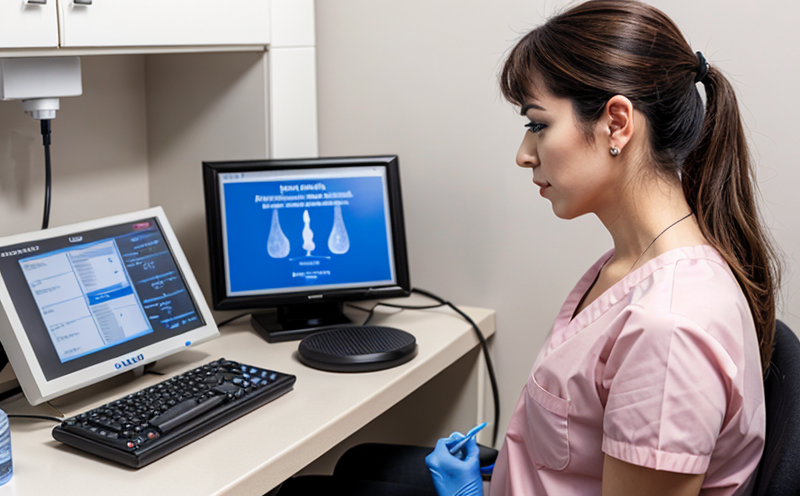Ovarian Hormone Monitoring in Animal Breeding Programs
The ovarian hormone monitoring service is a critical component of animal breeding programs, especially when it comes to optimizing reproductive health and enhancing the efficiency of livestock production. This service involves the systematic measurement of key ovarian hormones—such as luteinizing hormone (LH), follicle-stimulating hormone (FSH), estradiol (E2), and progesterone (P4)—to ensure optimal breeding conditions for animals like cattle, sheep, and pigs.
Understanding these hormonal levels is crucial because they directly influence the reproductive cycle of female animals. For instance, LH plays a significant role in triggering ovulation, while FSH stimulates follicle growth. Estradiol is essential for estrus detection, and progesterone maintains pregnancy. By closely monitoring these hormones, breeders can identify potential issues early on, such as luteal insufficiency or anovulatory cycles.
The process begins with collecting blood samples from the animals at specific intervals throughout their reproductive cycle. These samples are then analyzed using advanced laboratory techniques to determine hormone concentrations accurately. The results provide valuable insights into the health and fertility status of the herd, allowing for more informed decision-making regarding breeding practices.
Accurate monitoring also helps in implementing precision agriculture strategies, which can lead to improved animal welfare and increased profitability. By predicting ovulation times with greater accuracy, breeders can time artificial insemination procedures more effectively, reducing costs associated with unnecessary treatments or losses due to missed opportunities.
The application of this service extends beyond just improving reproductive outcomes; it also contributes significantly to genetic improvement efforts by ensuring that only healthy individuals are used as breeding stock. This practice not only enhances the overall quality of future generations but also supports sustainable farming practices by minimizing waste and maximizing resource utilization.
| Applied Standards |
|---|
| ISO 15189:2012 – Quality Management System for Clinical Laboratories |
| ASTM E691-03e1 – Standard Practice for Experimental Design |
| EN ISO/IEC 17025:2017 – General Requirements for the Competence of Testing and Calibration Laboratories |
| IEC 61489-1:2003 – Information technology—Microprocessor-based measurement, control, and communication systems in power generating installations |
The adherence to these international standards ensures that our services meet the highest quality assurance levels, providing reliable data that can be trusted by all stakeholders involved in animal breeding programs.
Applied Standards
- ISO 15189:2012 – Quality Management System for Clinical Laboratories
- ASTM E691-03e1 – Standard Practice for Experimental Design
- EN ISO/IEC 17025:2017 – General Requirements for the Competence of Testing and Calibration Laboratories
- IEC 61489-1:2003 – Information technology—Microprocessor-based measurement, control, and communication systems in power generating installations
Why Choose This Test
The ovarian hormone monitoring service is indispensable for any breeding program aiming to achieve optimal reproductive performance. Here are several reasons why choosing this test makes sense:
- Predictive Power: By tracking LH and FSH levels, breeders can predict ovulation windows more accurately.
- Informed Decision-Making: Progesterone monitoring helps in diagnosing luteal insufficiency early on, enabling timely interventions.
- Ethical Considerations: Ensuring the health of breeding stock aligns with ethical farming practices and enhances animal welfare.
- Sustainability: Efficient use of resources through targeted breeding programs supports sustainable agricultural practices.
The reliability provided by this service translates into better financial returns for farmers, as they can maximize their herd's productivity without unnecessary expenses. Additionally, it fosters a healthier environment both within the farm and in terms of public perception regarding animal welfare standards.
Use Cases and Application Examples
- Cattle Breeding: Monitoring estradiol levels helps detect estrus, facilitating timely insemination procedures.
- Pig Production: Progesterone testing identifies luteal insufficiency early, preventing early embryonic losses.
- Lambing Season: During lambing season, monitoring LH can predict ovulation windows for synchronized breeding programs.
- Dairy Cows: Estradiol and progesterone levels are crucial for managing the lactation cycle effectively.
In each case, precise hormonal data guides strategic interventions that enhance reproductive efficiency. This not only improves individual animal health but also contributes to broader economic benefits for the industry as a whole.





